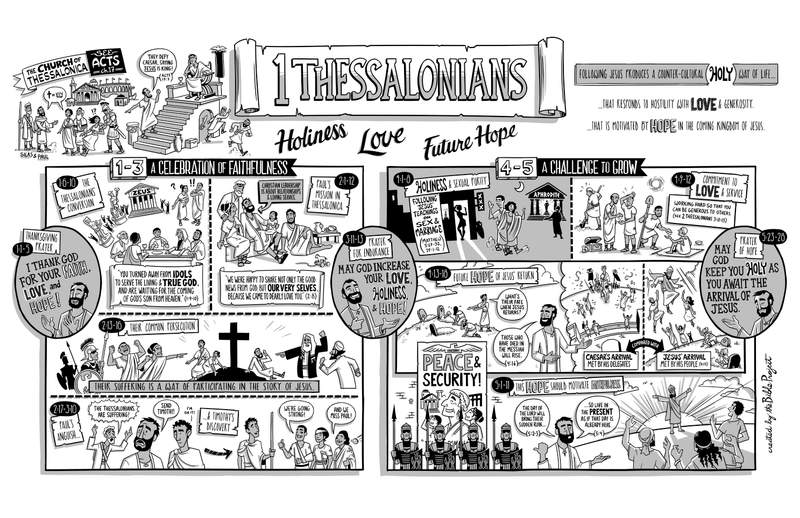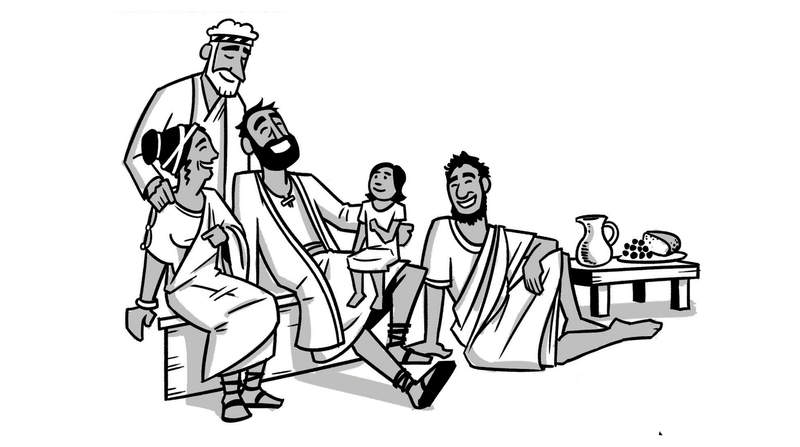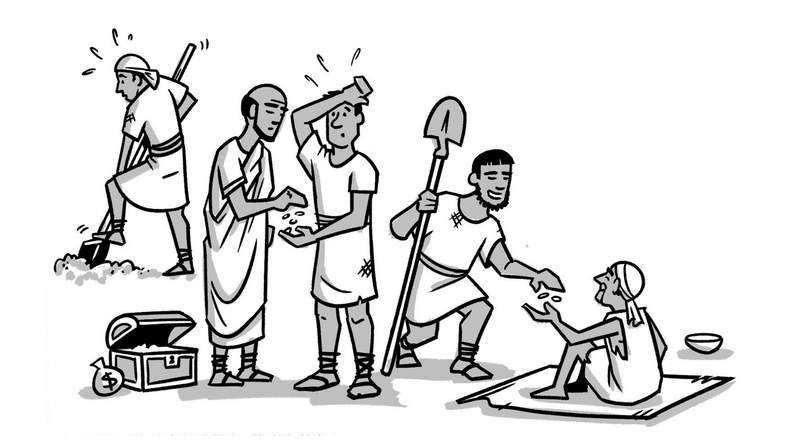Book of 1 Thessalonians
About

This is most likely the earliest letter we have from Paul, and you can read the book of Acts chapter 17 to get the back story. Paul and his coworker Silas went to the ancient Greek city of Thessaloniki (or Thessalonica). After just one month of telling people the good news, a large number of both Jewish and Greek people gave their allegiance to Jesus and formed the first church community there. But trouble was brewing as Paul’s announcement of the risen Jesus as the true Lord led to local opposition. The Christians in Thessaloniki were accused of defying Caesar, the Roman emperor, by “saying that there’s another king, Jesus” (Acts 17:7). This led to persecution that became so intense that Paul and Silas were forced to flee from Thessaloniki. This was a doubly painful tragedy as they loved the people there.
This letter is Paul’s attempt to reconnect with them after receiving a report from Timothy that the Thessalonian Christians were doing more than okay—they were flourishing despite intense persecution.
This letter was written with two main movements. The first section celebrates their faithfulness (1 Thess. 1-3), while the other section is a challenge to keep growing as followers of Jesus (1 Thess. 4-6). These two larger sections are surrounded by three prayers. The letter opens with a thanksgiving prayer in 1:1-5, with the two movements linked together by a transitional prayer in 3:11-13, and then the letter concludes with a final prayer in 5:23-28.
1 Thessalonians 1-3: Paul’s Gratitude and Love for the Thessalonians
Paul opens the letter by giving thanks and celebrating the Thessalonians’ faith, their love for others, and their hope in Jesus despite persecution. He goes on to retell the story of their conversion, looking back at how they were once idolatrous polytheists living in a culture in which all of life was permeated with institutions and practices honoring the Greek and Roman gods. Paul says that they “turned away from idols to serve the living and true God and are waiting for the coming of God’s Son from heaven” (1 Thess. 1:9-10). In a city like Thessalonica, transferring your allegiance to the God of Israel and King Jesus came at a cost—isolation from your neighbors and hostility from family. But for these Christian Thessalonians, the overwhelming love of Jesus and the hope of his return made it all worth it.
Paul continues on to retell the story of his mission in Thessaloniki and the dear friendships that he formed with the people. Paul uses intimate metaphors to show his love for them. They treated him like their child, while he became like their mother and father. “We were happy to share not only the good news from God, but our very selves because we came to dearly love you” (1 Thess. 2:8). Paul reminds us that the essence of Christian leadership is not about power and influence. It is about healthy relationships and humble, loving service. Paul reminds them that he never asked for money. He simply came to serve and love them in the name of Jesus.

Next, Paul reflects on their common persecution. Just as Jesus was rejected and killed by his own people, so Paul is persecuted by his fellow Jews, and the Thessalonians too face hostility from their Greek neighbors. Paul draws a strange comfort from knowing that, together, their suffering is a way of participating in the story of Jesus’ own life and death.
Paul shares the anguish that he experienced when he heard of the Thessalonians’ hardships after he and Silas left. He had sent Timothy to support them and see how they were doing. To his joy, Timothy discovered that they were actually going strong! They were still faithful to Jesus, full of love for God and neighbor, and longing to see Paul as much as he longed for them. Paul concludes this thought with a prayer for endurance, introducing topics that he will address in the letter’s second half. He prays that God will grow the Thessalonians’ capacity to love, strengthen their commitment to holiness, and fix their hope on the return of King Jesus.
1 Thessalonians 4-5: Guidance for Living and Details of Jesus’ Return
In the second half of the letter, Paul challenges the people to live a life that’s consistent with the teachings of King Jesus. This means, first of all, a serious commitment to holiness and sexual purity (1 Thess. 4:1-8). In contrast to the promiscuous sexually destructive culture around them, they are to follow Jesus’ teaching about experiencing the beauty and power of sex within a committed marriage covenant relationship (Matt. 5:27-32; 19:1-12). God takes sexual misbehavior seriously, as it dishonors and destroys people as well as their dignity.
Following Jesus also means a commitment to loving and serving others (1 Thess. 4:9-12). Paul instructs them that Christians should be known in the city as reliable people who work hard. This is not only to make money but also so that they can have resources to provide for themselves and generously share with those in need.

After this, Paul addresses a number of questions the Thessalonians had raised about the future hope of Jesus’ return (1 Thess. 4:13-18). Some Christians in the church had recently died, most likely killed as martyrs, and their friends and family were wondering what their fate would be when Jesus returned. Paul makes it clear that, despite their grief and loss, not even death can separate Christians from the love of Jesus. When he returns as King, he will call both the living and the dead to himself.
Paul then uses powerful imagery that would have been familiar to the Thessalonians. He employs language that would normally describe how a city subject to the Roman Caesar would send a delegation to welcome or meet his arrival. Paul then applies this image to the arrival of King Jesus. He too will be greeted by a delegation of his own people, who will “meet the Lord in the air” as they welcome and escort him back to his world, where he will establish his kingdom of justice and peace.
Paul wants the Thessalonians to see how this hope should motivate faithfulness to Jesus (1 Thess. 5:1-11). He first pokes at some famous Roman propaganda that claimed Caesar was the one who brought peace and security (1 Thess. 5:3). Of course, Rome’s peace actually came through violence, enslavement of their enemies, and military occupation. Paul warns that Jesus will return as King one day and confront this kind of injustice. Followers of King Jesus should live in the present as if that future is already here. Despite the darkness of human evil surrounding them, they should stay aware as the light of God’s Kingdom dawns here on Earth as it is in Heaven.
Paul closes all these exhortations as he began, with a hopeful prayer (1 Thess. 5:23-28). He prays that God will permeate their lives with his holiness, setting them apart to be wholly devoted and blameless until the return of King Jesus.
1 Thessalonians reminds us that, from the very beginning, following Jesus has produced a truly countercultural and holy way of life, which sometimes generates suspicion and conflict. The response of Jesus’ followers to such hostility should always be love, meeting opposition with grace and generosity. This way of life is motivated by hope in the coming Kingdom of Jesus, which has already begun with his resurrection from death. Holiness, love, and future hope—that’s what 1 Thessalonians is all about.

